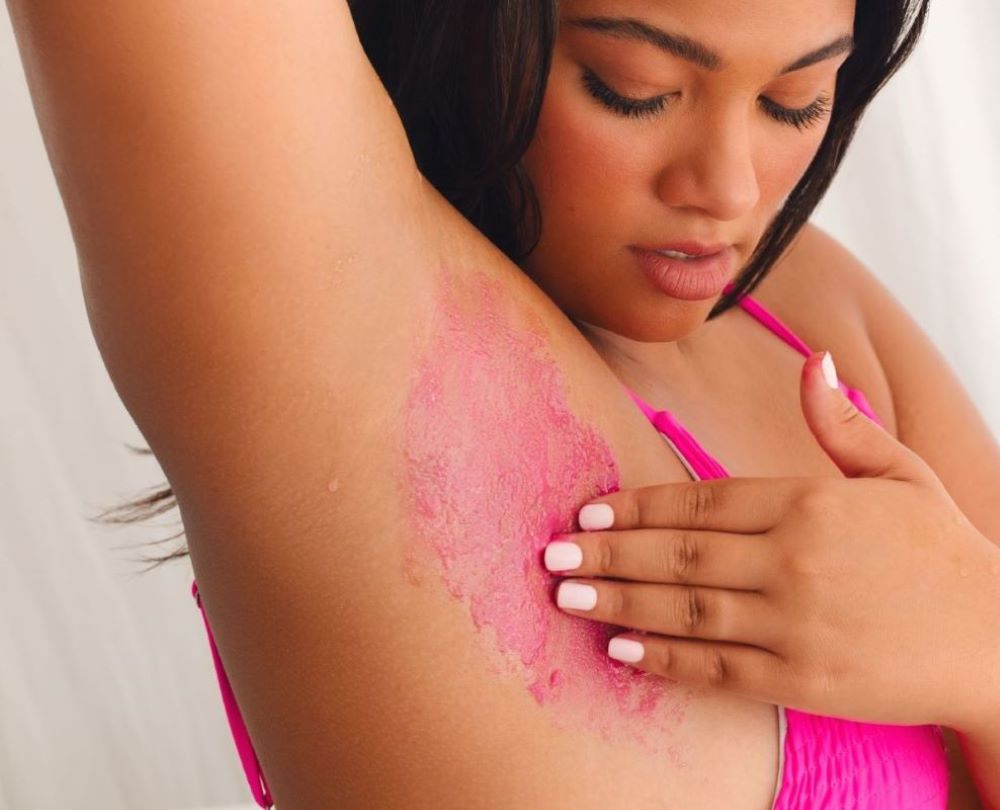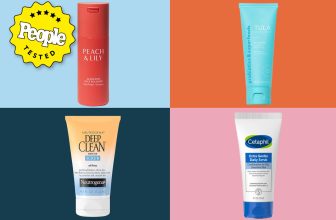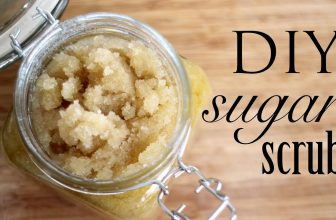Should I Exfoliate Before or After Shaving
Exfoliate before shaving to prevent ingrown hairs and achieve a smoother shave. Exfoliating after shaving can irritate the skin.
Should I Exfoliate Before or After ShavingWondering whether to exfoliate before or after shaving? Proper exfoliation before shaving helps remove dead skin cells, reduce ingrown hairs, and create a smoother surface for your razor. On the other hand, exfoliating after shaving can lead to skin irritation and discomfort.
By exfoliating before shaving, you can improve the effectiveness of your shave and enhance the overall condition of your skin. This simple step can make a big difference in your shaving routine and leave your skin feeling fresh and rejuvenated. Remember, exfoliate before shaving for the best results!
Introduction To Exfoliation And Shaving
Exfoliation and shaving are two essential steps in a skincare routine. Understanding how to incorporate them can significantly impact the health and appearance of your skin.
Benefits Of Exfoliation For Skin
Exfoliation removes dead skin cells, unclogs pores, and promotes skin renewal. It helps to reveal smoother, brighter skin and allows for better absorption of skincare products.
Role Of Shaving In Skin Care
Shaving not only removes unwanted hair but also exfoliates the skin, leaving it smooth and soft. Proper shaving techniques can help prevent ingrown hairs and irritation.

Understanding Skin’s Needs
To optimize skin health, consider exfoliating before shaving to remove dead skin cells and prevent ingrown hairs. This allows for a smoother shave and reduces irritation, leading to a closer and more comfortable shaving experience. Understanding your skin’s needs is essential for achieving the best results.
Understanding Skin’s Needs Types of Skin and Their Characteristics When it comes to skincare, understanding your skin type is crucial. There are generally five types of skin: normal, dry, oily, combination, and sensitive. Each type has its own unique characteristics and requires specific care to maintain its health and radiance. Normal skin is well-balanced, neither too oily nor too dry, and generally has small pores. Dry skin often feels tight and can be flaky, while oily skin tends to be shiny with larger pores. Combination skin is a mix of both oily and dry areas, while sensitive skin is prone to irritation and redness. How Exfoliation and Shaving Affect Different Skin Types It’s important to consider your skin type when deciding whether to exfoliate before or after shaving. Exfoliation helps remove dead skin cells and can prevent ingrown hairs, but the timing and method can vary based on your skin type. For normal or oily skin, exfoliating before shaving can help lift hairs and reduce the risk of razor burn. However, for those with sensitive or dry skin, exfoliating after shaving can help prevent irritation and maintain moisture balance. Understanding how exfoliation and shaving affect different skin types is essential for creating a personalized skincare routine that promotes healthy, smooth skin.
Exfoliation Basics
For optimal results, exfoliate before shaving to remove dead skin cells and prevent ingrown hairs. Exfoliation prior to shaving leads to smoother skin and a closer shave, reducing the risk of irritation. This pre-shave routine promotes healthier skin and enhances the effectiveness of your shaving routine.
What Is Exfoliation?
Exfoliation is the process of removing dead skin cells from the surface of your skin to reveal a smoother, brighter complexion. Dead skin cells can build up on the surface of your skin, causing it to look dull and rough. Exfoliating regularly can help to unclog pores, prevent ingrown hairs, and improve the overall texture and appearance of your skin.
Different Exfoliation Methods
There are a variety of different exfoliation methods to choose from, including physical exfoliation and chemical exfoliation. Physical exfoliation involves using a scrub, brush, or tool to physically remove dead skin cells from the surface of your skin. Chemical exfoliation involves using acids or enzymes to dissolve dead skin cells. Some popular physical exfoliation methods include:
- Body scrubs
- Facial scrubs
- Exfoliating brushes or sponges
- Microdermabrasion
Some popular chemical exfoliation methods include:
- Alpha hydroxy acids (AHAs)
- Beta hydroxy acids (BHAs)
- Enzymes
It’s important to choose an exfoliation method that is appropriate for your skin type and concerns. If you have sensitive skin, for example, you may want to avoid harsh physical scrubs and opt for a gentler chemical exfoliant instead. In conclusion, exfoliating before or after shaving can help to improve the overall health and appearance of your skin. By removing dead skin cells and unclogging pores, you can prevent ingrown hairs, razor burn, and other common shaving issues. Just be sure to choose an exfoliation method that works for you and your skin type.
Shaving Essentials
Proper Shaving Techniques
Exfoliating before shaving can help to prevent ingrown hairs and achieve a closer shave. It is best to exfoliate a day or two before shaving to allow the skin to recover and reduce the risk of irritation.
Choosing The Right Shaving Tools
When selecting a razor, consider factors such as the number of blades, the handle grip, and whether it is disposable or reusable. A quality shaving cream or gel can also make a significant difference in the shaving experience, providing lubrication and protection for the skin.
Benefits Of Exfoliating Before Shaving
Exfoliating before shaving helps prevent ingrown hairs and razor bumps by removing dead skin cells. It also provides a smoother surface for a closer shave, reducing the chances of irritation. Incorporating exfoliation into your shaving routine can lead to a more comfortable and effective shaving experience.
Exfoliating before shaving has many benefits that can improve your overall shaving experience. One of the main benefits is enhanced razor performance, which can result in a closer, smoother shave. Additionally, exfoliating before shaving can help reduce the occurrence of ingrown hairs, which can be painful and unsightly.
Enhanced Razor Performance
Exfoliating before shaving removes dead skin cells and other debris that can clog your razor blades. This allows your razor to glide more easily over your skin, reducing the risk of nicks and cuts. With a smoother shave, you’ll also be able to achieve a closer shave, which can result in less irritation and a more polished appearance.
Reduction In Ingrown Hairs
Ingrown hairs occur when hair follicles become clogged with dead skin cells or other debris, causing the hair to grow back into the skin instead of out of it. Exfoliating before shaving can help to prevent this from happening by removing the dead skin cells that can clog hair follicles. This can result in fewer ingrown hairs and less irritation, making your shaving experience more comfortable and enjoyable. In conclusion, exfoliating before shaving has many benefits that can improve your overall shaving experience. By enhancing razor performance and reducing the occurrence of ingrown hairs, you’ll be able to achieve a closer, smoother shave with less irritation and discomfort. Make sure to exfoliate regularly before shaving to maximize these benefits.

Reasons To Exfoliate After Shaving
Soothes And Smooths Skin
Exfoliating after shaving helps to soothe and smooth the skin. When you shave, it not only removes the hair but also exfoliates the top layer of the skin. This can leave the skin feeling rough and irritated. By exfoliating after shaving, you can help to remove any remaining dead skin cells and achieve a smoother, softer skin. This can also help to reduce the risk of ingrown hairs and prevent irritation.
Prevents Pore Clogging
Exfoliating after shaving helps to prevent pore clogging. Shaving can sometimes lead to the buildup of dead skin cells and oils in the pores, which can result in clogged pores and potential breakouts. By exfoliating after shaving, you can help to clear out the pores and prevent this buildup, keeping your skin clear and healthy.
Expert Opinions And Research
When it comes to achieving the smoothest, irritation-free shave, the timing of exfoliation is a hotly debated topic. Expert opinions and research shed light on the best practices for exfoliating before or after shaving.
Dermatologists’ Recommendations
Dermatologists often recommend exfoliating before shaving to help prevent ingrown hairs and achieve a closer shave. By removing dead skin cells, exfoliation helps to clear the path for the razor, reducing the likelihood of irritation and nicks.
Exfoliating after shaving can also be beneficial as it helps to unclog pores and prevents ingrown hairs. This practice is particularly useful for individuals with sensitive skin who may experience irritation from exfoliating before shaving.
Studies On Exfoliation Timing
Research has shown that exfoliating before shaving can lead to a smoother, closer shave and reduce the risk of razor burn. Conversely, some studies suggest that exfoliating after shaving can help to soothe the skin and minimize irritation caused by the razor.
Practical Tips And Best Practices
For optimal results, exfoliate before shaving to remove dead skin and prevent ingrown hairs. This helps achieve a closer shave and smoother skin, reducing irritation and razor burns. Following this sequence ensures a more effective and comfortable shaving experience.
How To Choose Exfoliation Products
Routine Integration Tips
Conclusion: Making The Right Choice
For the best results, exfoliate before shaving to remove dead skin cells and prevent ingrown hairs. This allows for a smoother shave and reduces the risk of irritation. Afterwards, moisturize to keep the skin hydrated and healthy.
Personalizing Your Skin Care Routine
When it comes to exfoliation and shaving, it’s important to remember that there is no one-size-fits-all approach. Personalizing your skin care routine is crucial in achieving the best results. Consider your skin type, sensitivity, and shaving habits when deciding whether to exfoliate before or after shaving.
For those with sensitive skin, it may be best to exfoliate before shaving to minimize irritation and ingrown hairs. On the other hand, individuals with resilient skin may find that exfoliating after shaving helps to remove any remaining dead skin cells and achieve smoother results. Experiment with different approaches to find what works best for you.
Final Thoughts On Exfoliation And Shaving
Ultimately, the decision to exfoliate before or after shaving depends on your unique skin care needs and preferences. Understanding your skin type and observing how it responds to exfoliation and shaving is key to making the right choice. By personalizing your routine and paying attention to how your skin reacts, you can optimize the benefits of both exfoliation and shaving for a smoother, healthier complexion.

Frequently Asked Questions
Should You Exfoliate First Or Shave First?
Exfoliate before shaving to prevent ingrown hairs and achieve a smoother shave. This helps remove dead skin cells and opens up hair follicles for a closer shave.
Should I Exfoliate Before Or After Showering?
Exfoliate before showering to remove dead skin cells effectively. This allows the skin to absorb moisturizers better.
Should You Exfoliate Razor Bumps?
Yes, exfoliating razor bumps can help prevent ingrown hairs and promote smoother skin. It removes dead skin cells and allows hair to grow without obstruction.
How To Exfoliate To Avoid Ingrown Hairs?
To exfoliate and avoid ingrown hairs, use a gentle exfoliating scrub or brush before shaving. Focus on areas prone to ingrown hairs like the bikini line or beard area. Don’t exfoliate too often and avoid using harsh scrubs. Moisturize afterwards to prevent dryness and irritation.
Conclusion
Ultimately, the decision of whether to exfoliate before or after shaving depends on your skin type and preference. Experiment with both methods to see which works best for you. Remember to consider the sensitivity of your skin and adjust your routine accordingly for smooth and healthy skin.







